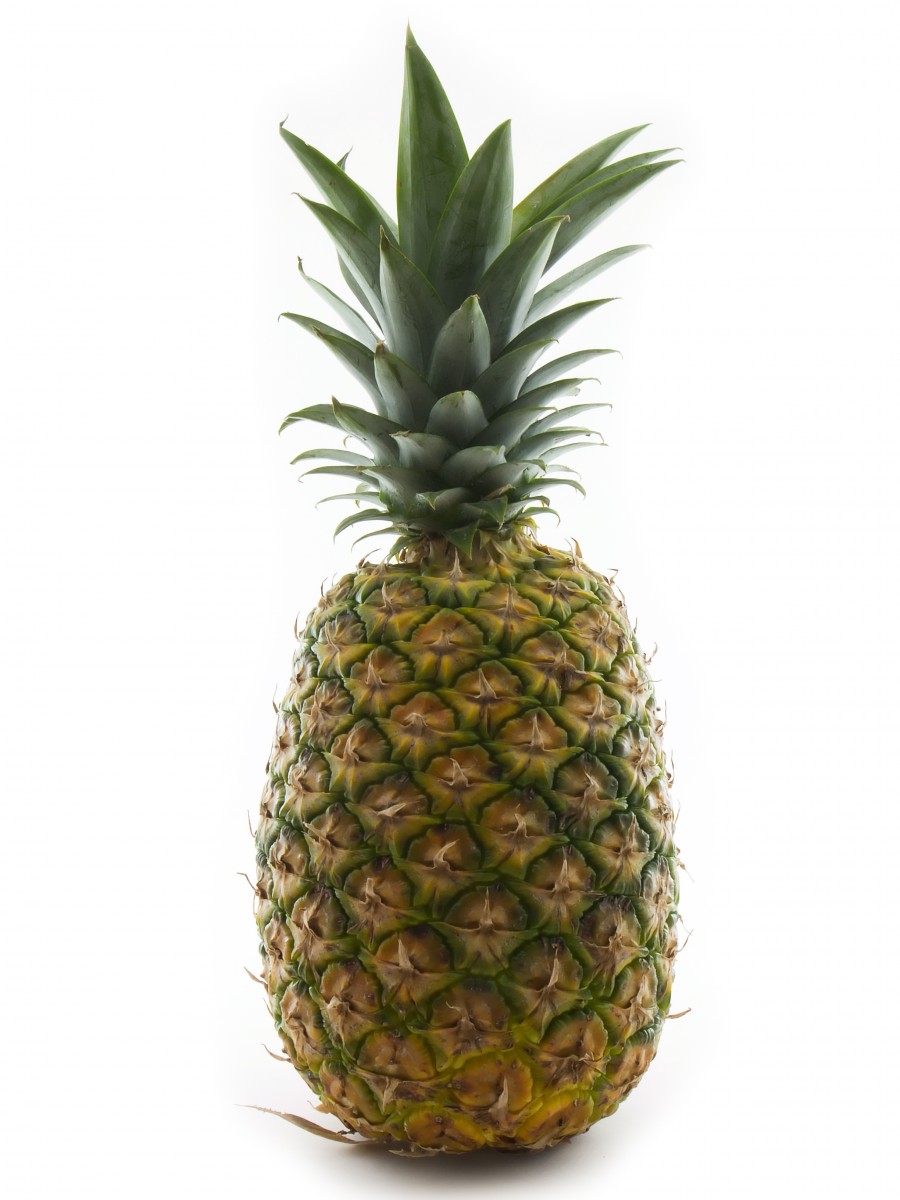
This month, we find ourselves in peak ice cream season, the most wonderful  time of the year! But ice cream has its hazards — including the dreaded brain freeze. We all know that when the mouth-chilling wave hits we need to go easy on the Tiger Tail or Superkid, but have you ever thought about how the physical process works?
time of the year! But ice cream has its hazards — including the dreaded brain freeze. We all know that when the mouth-chilling wave hits we need to go easy on the Tiger Tail or Superkid, but have you ever thought about how the physical process works?
Turns out, the complex network of nerves that cover our palates, that are usually so good at sending information to our brains about what’s just arrived in our mouths, are too good when it comes to relaying the cold from a bite of a frozen treat. Brain freeze — also known by its technical name, “sphenopalatine ganglion neuralgia” — is a textbook example of how those nerves process stimuli, and how referral pain appears in the brain in response. Dr. Kris Rau of the University of Louisville in Kentucky, as interviewed by NPR:
“‘Now on the roof of your mouth there are a lot of little blood vessels, capillaries.’ […]
The rush of cold causes those vessels to constrict.
‘And when that happens, it happens so quickly that all of those little pain fibers in the roof of your mouth — they interpret that as being a painful stimulus,’ Rau says.
A message is then shot up to your brain via the trigeminal nerve, one of the major nerves of the facial area.
The brain itself doesn’t have any pain sensing fibers, but its covering — called the meninges — does.
‘And of course all of those little pain-sensing fibers are hooked up to your trigeminal nerve,’ Rau says. ‘So the brain is trying to figure out what is going on. It knows there is something wrong, something that is painful and they don’t know exactly where it is.’
Sometimes, our brains are too smart for their own good — and so far ahead of us we can’t even tell them that the cone we’re enjoying isn’t a threat! But, ice cream season will soon be over; brain freeze aside, I will enjoy every scoop before winter comes our way.

I’m going to send this week’s article to my middle son Ben, a longtime Lego enthusiast. He’s just returned to Canada from a year working abroad. His job was so time – and attention-intensive, all the poor guy could do to unwind was invest in Lego sets that he obtained through retail therapy (he frequented Amazon.com). He would assemble them at the end of his trying days as a form of meditation, like raking the gravel in a Japanese garden. But to get them back here, he had to take them apart… So he may find the following adventure useful!
After a visit to Legoland in Denmark, where he witnessed patrons buying expensive sets, Jacques Mattheij had a brainwave. Lego has a high resale value, especially for some of the rarer sets and more complicated bricks. But a lot of it is resold in unsorted lots — at a much cheaper price that corresponds with how much of a pain in the neck it is to organize the bricks into something useful.
Mattheij wanted to build an AI that would do that for him, and by golly, he did. His sorting machine started processing the two metric tonnes (!) of Lego he bought off eBay by feeding it onto a conveyor belt through a hopper. This separated the bricks, and allowed the magnifying imaging camera to snap a pic and check the image against examples stored on a PC.
Once Mattheij worked the kinks out of the imaging and checking process, he had to teach his AI how to classify each brick. This was exceptionally difficult — at one point, Mattheij estimated that hand-labeling enough images for his AI to learn from would take six monthsof full time attention. After a bit of thought, Mattheij devised a work around; manually correcting only the images that the AI got wrong, and returning them to the learning pool.
“The first day I managed to label a starter set of about 500 assorted scanned pieces. Using those parts to train the net, the next day the machine sorted 2,000 more parts. About half of those were wrongly labeled, which I corrected. The resulting 2,500 parts were the basis for the next round of training. Another 4,000 parts went through the machine, 90 percent of which were labeled correctly! So, I had to correct only some 400 parts. By the end of two weeks I had a training data set of 20,000 correctly labeled images.
Mattheij reports that his Lego sorting machine just needs to learn a few more of the rarer pieces, and it’ll soon making a dent in the boxes of bricks that have filled his garage. Then, he can sell the sorted bricks for almost four times what he paid for them! Lego really brings out the ingenuity in its users — have fun, Ben!
As you likely already know, dear reader, we on the DFC home front live deep in the wilds of the Frontenac Arch Biosphere. Transitioning from suburban Toronto a couple years ago was a bit of a culture shock, but we’ve gotten quite comfortable with our new, more sustainable, digs! The only thing I still find myself concerned about, as someone who spent her whole life quietly supported by a municipal wastewater system, is our septic tank. There has to be something more environmentally helpful than a metal box under our back lawn that gets pumped out periodically by a big dieselly truck! And something a little, well, cooler than a standard composting waste system…
That is why I love this news from the University of the West of England, who, in partnership with Oxfam, is running a trial of a new kind of fuel cell: one that generates electricity from human urine!
The trial urinals have already shown they can generate enough power to light the bathrooms in which they were located. But there are further possible applications: In disaster situations, where portable toilets could provide lighting to help prevent accidents and assault, or could even charge a cell phone. And amazingly, a side effect of the electricity-generating process in these “microbial fuel cells” appears to kill pathogens in the waste water — which means toilets with these cells could someday prove a source of potable water as well.
disaster situations, where portable toilets could provide lighting to help prevent accidents and assault, or could even charge a cell phone. And amazingly, a side effect of the electricity-generating process in these “microbial fuel cells” appears to kill pathogens in the waste water — which means toilets with these cells could someday prove a source of potable water as well.
“This disinfection potential gave the UWE team an idea to systematically test how [microbial fuel cells] could be used to purify wastewater. For this, they picked one of the most important gastrointestinal pathogens, a strain of the Salmonella bacterium which causes typical food poisoning symptoms.
‘This species was introduced into an MFC cascade system treating human urine, to determine the anodic killing efficacy when operating in continuous flow conditions,’ the researchers write in the study.
When they checked the outflow at the end of the purification process to measure the remaining pathogen levels, they found just what they had hoped for – greatly reduced Salmonella counts.”
The Salmonella numbers were so reduced they actually fell under the “safe” level of conventional sanitation standards. This concept could be a game-changer: the team planned a further, profile-raising trial at Glastonbury Music festival that seems to have gone well. Worldwide, this could end up being the little can that could — thanks to science!

After I waxed rhapsodic about one of my favourite fruits a few weeks ago, apples, you will have to indulge me one more time with tech news that involves another type of fruit close to my heart: pineapples!
Or, more accurately, it involves the pineapples’ leaves — fashion designer Carmen Hijosa has created a textile called Piñatex, by adapting a traditional processing method from the Philippines. Her company manufactures a vegan leather alternative from the spiky fibrous pineapple leaves that are commonly discarded before the fruits are shipped from the farm.
In addition to concerns about animal welfare, the production of regular leather has massive environmental impacts. From the tanning process, to dyes, to dust, leather production takes its toll on the earth and the bodies of those engaged in the industry. And traditional vegan leather, while eliminating the animal cruelty aspect, can sometimes be just as earth unfriendly as regular leather.
This is why Piñatex is so interesting. The process makes use of a waste product that already exists, so would not require any more water or land than is currently being used. And it would provide extra income to farmers, and countries where pineapples are grown.
According to consumers, the fibre, while not totally leather-like, offers a comparable experience; holding up well in the rain and garnering “lots of compliments”! I consider this an object lesson in unconventional problem solving: sometimes the solutions are right in front of us – like in our kitchen counter fruit bowls
Since we live in different parts of the planet — dry vs. wet — humans and octopuses rarely cross paths. The general public has only recently begun hearing news that this sometime-sashimi is actually a remarkably intelligent animal. Octopuses are perhaps even more long-lived in their intelligence than us!
Science is now looking at the foreign world of the octopus to shed light on human problems that need solving. A team out of Sungkyunkwan University is attempting to find the best format for to a water-resistant adhesive. And through that effort, they are learning about what an engineering marvel our cephalopod friends are!
“If you’ve ever seen an octopus tentacle, you’d know it’s covered in little suckers, each a deep suction cup with a ball in the middle. [Assistant professor Changhyun] Pang and his team wanted to figure out how the tentacles stuck to things underwater, so they made their own tentacles. Rather than a long appendage with protrusions, they instead produced a polymer sheet with dimples tens of micrometers across, each with a little sphere in the middle.
They experimented with various sucker radii, finding that the stickiest adhesive had 50 micrometer dimples arranged fairly densely. They tried several different dimple shapes, and the octopus-inspired one was the stickiest by far under moist conditions, underwater, and under oil.”
A tape-like product with octopus-derived suckers on it could have many applications, including moving items underwater, preventing barnacles from adhering to surfaces, and, most importantly, creating a medical adhesive that could close wounds in wet or underwater conditions. The team considers itself on track for commercial applications to be rolled out in three years! I look forward to the fruits of this collaboration between invertebrates and their less lucky counterparts — us.

We’ve just gotten into summer, so there’s plenty of fresh local fruit — strawberries, peaches — that we get to enjoy before one of my fall favourites, apples! When the brisk October days come, and it’s time to find a pick-your-own orchard, I’ll keep in mind this fascinating New York Times article on apple hunters— who use scientific techniques to find the lost varieties of this essential North American fruit.
And there used to be 17,000 of these varieties, before industrial agriculture whittled the gene pool down a century ago. Now, 15 varieties, led by the abominable Red Delicious have cornered 90% of the market. But that’s not to say that gems of the past are entirely gone. Many melted into parkland or overgrown fields, and are now being rediscovered by a community of sleuths, who then help interested propagators breathe life back into heritage apples. How they do so is fascinating: using old donated seed catalogues and records of county fairs long past to determine rough locale. Then science gets involved!
“Most apple varieties, produced by chance intermingling of pollen from neighboring trees on family farms, cannot be definitively identified by DNA, so the history is important. Plant scientists said old varieties might have something to teach as well about evolution or climate, in looking at the qualities that kept a particular tree going despite the odds.
‘That’s my scientific curiosity: How did this plant do it? How did it survive when others died?’ said Amit Dhingra, an associate professor of horticulture at Washington State University who works with [apple hunter David] Benscoter and the Whitman County Historical Society on the Lost and Heritage Apples of the Palouse project.”
I don’t often think of the history (and industry) behind my favourite apples, when taking a big bite; I usually stay in the present of their crisp tart taste! If, someday, I have the chance to bite into a Limbertwig or a Dickinson that has made it back to market, it might be easier to think of them as edible time capsules. It will be a privilege to taste the hard-won flavour of centuries ago in a fresh fruit.
After a few years of awareness, researchers are now really digging into the mysteries of the bacterial powerhouse inside the human gut — the glorious microbiome. From chronic fatigue to jet lag effects, we are discovering that upsetting the unique microbial balance within each of us can have far-reaching effects.
But some of them may be positive: A team out of Arizona State University has uncovered that patients who undergo one of the most aggressive forms of bariatric surgery end up with one of the most diverse gut microbiome profiles — and that the colony of happy bacteria doing their thing may be the principal cause of the subsequent weight loss, rather than the reduction in stomach size.
“Gastric bypass works like this: A surgeon takes the upper portion of the stomach and cordons it off with stitches, creating a small pouch. Then the doctor attaches a Y-shaped section of the small intestine to the pouch, which routes any food you might swallow directly to the second segment of the small intestine, bypassing the portions of your digestive tract that do most of the nutrient- and calorie-absorbing. It’s a pretty dramatic organ-reorganization. One that makes for a less acidic environment with more oxygen, allowing microbes formerly unable to survive in the gut to flourish.”
Megan Molteni of Wired relates that one of the new microbes that find themselves in the gut after this surgery is Lactobacillus a probiotic that assists digestion and is normally found only in the mouth! With the amazing results of this small study the researchers are now looking at microbial profile as the magic bullet for obesity control, and ways to affect the gut environment that don’t involve surgery.
As a woman in business, I am often aware of the way I speak, and how it comes across to clients and co-workers. Many damaging labels end up stuck to women who try to get their point across in power situations, and I like to do my bit in recognizing when that’s happening.
So I’m cheered to see that one linguistic quirk, uptalk, is being quickly reclaimed! (Uptalk is the“Valley Girl” tendency to end a declarative sentence with an upward inflection, making it sound like a question.) We have all heard about how women need to stop speaking in this manner if they want to be taken seriously, how it makes us sound undecided, or unsure, etc. etc. Of course, most of this criticism comes from people who are used to being in power and defining access to it — and now we’re looking at how uptalk has actually been a subversive demonstration of power all along.
Uptalk may share a technique that also occurs in American Sign Language — where a person signing a conversation raises their eyebrows, to signal to their partner the existence of a yes/no question, when there isn’t one in the content.
“According to studies:
(study 1: ; study 2) […], uptalk serves the same purpose: By turning a declaration into a question, it invites the listener to listen actively, to nod or confirm, much like adding ‘you know?’ or ‘right?’ to a sentence. It also serves a more basic function of ‘floor-holding,’ preventing interruption by indicating there’s more to come; it turns a period into a semicolon.
[Journalist S.I.] Rosenbaum draws the connection beyond linguistics into sociology: Like ASL speakers, young women are often ignored or talked over. So it makes sense that they’d develop a similar defense.”
Nick Douglas of Lifehacker continues that “everyone” is now adopting uptalk, because of the strain that personal devices and up-to-the-second connectivity put on our attention spans. This is interesting, but I’m not ready to set aside the gendered nature of this particular bias quite yet. I think it’s high time for everyone to start listening to uptalkers, and not get hung up on how they’re saying it. And then, we can tackle the stigma of vocal fry next!

Alphabet Inc., parent company of Google, has answered a call for proposals from the City of Toronto for a high-tech partnership that will reshape a chunk of the city’s waterfront. Alphabet’s “moonshot” initiatives arm, Sidewalk Labs, has been looking for a city in which to embed a new kind of urban district that it wants to build “from the Internet up.” Now, after having considered and cast aside sites in Denver and Detroit, the faintly ominous-sounding project is in private talks to touch down in The Six.
Due to the aforementioned private nature of the development right now, details are sparse; but many sources have been extrapolating possible outcomes from Sidewalk’s previous, smaller, urban interventions like the (possibly privacy-invading) public Wi Fi and browsing stations LinkNYC, As well as the philosophies espoused by Sidewalk Labs CEO Dan Doctoroff. From Doctoroff’s talk at the Smart Cities NYC conference in early May:
“‘The future of cities lies in the way these urban experiences fit together and improve quality of life for everyone living, working and growing up in cities across the world,’ Doctoroff said. ‘Yet there is not a single city today that can stand as a model — or even close — for our urban future.’
“We’ve found that applying urban innovations at scale could reduce cost of living by 14 percent compared to surrounding metro areas for an average family in America,”
In addition to managing cost of living, the concept aims to overhaul five more “urban experiences” to through integration of technology: housing and real estate, transportation (including public), environmental sustainability, a “new public realm” (parks, sidewalk and street experiences), and data-driven city services (e.g. remote monitoring of congestion and pollution).
Ultimately, Doctoroff sees the eventual district’s growth as modeled on that of a tech company. I think it’s far too early in the game to know if that model is sustainable for tech companies themselves, let alone an entire city district. I’m reminded of the kind of top-down city restructuring of the Robert Moses era, where heavily urban areas full of life were razed in favour of freeways and housing projects. While there is no real life in the industrial “Quayside” area up for development, plunking a hive-minded, Google-associated, at-home-anywhere-we-just-need-a-city-who-will-have-us concept of a tech district into the real world might need a smidge more consideration, in my opinion. Hopefully, that’s what they’re doing in these private talks right now… Because the concept could be pretty cool – if we can sustain it.
I’m always impressed by the olfactory feats my canine companions Jill and Samson can accomplish. From searching a field for a groundhog to chase, to lasering in on the treat bag as I pull it from the kitchen shelf, I’m envious sometimes of the whole other world of scents they seem to inhabit!
Well, science may be showing that envy is not required: humans may actually have senses of smell comparable to that of dogs, and other big smellers like rodents. While we bipeds may have been socialized to not pay keen attention to scent input, we actually have competitive numbers of odour receptor genes, as well as a large olfactory bulb compared to the size of the rest of our brains. John McGann, a neuroscientist out of Rutgers and author of a recent paper in Science attempting to dispel the myth of humans as poor smellers, believes these physical realities translate into a better smelling skill set for us. McGann goes back to other studies and attempts to set the record straight. From the Guardian:
“Humans have approximately 1,000 odour receptor genes, for instance, compared to 1,100 in mice, which some had taken as confirmation of mouse superiority. However, other work suggests there is not a tight relationship between the number of olfactory genes and smelling ability. One study found that cows have 2,000 such genes – far more than dogs.
Even the constant sniffing of some animals may also be misleading, McGann said. When a rat is exposed to a new smell, for instance, it performs ‘fast investigative sniffing’ but rats have the same reaction to hearing an unfamiliar new sound or seeing something unexpected. ‘Sniffing, to some extent, means “I’m curious”,’ he said.” [Or, as we saw last week, “I’m anxious.”]
McGann does concede a few points to the dogs though – that the reason they can detect the smell of explosives and we can’t could be due to the higher concentration of olfactory receptors in their noses. And critics of McGann’s work say that dogs have always been better at the kind of scent work (like tracking, sussing out drugs, or detecting kinds of cancers) that humans could not aspire to, even with the attention of a sommelier. But I think we could definitely fall somewhere in that huge middle ground between bloodhound and Pet Rock! If the nose knows, it’s only a matter of letting it do its thing, and the science will follow.